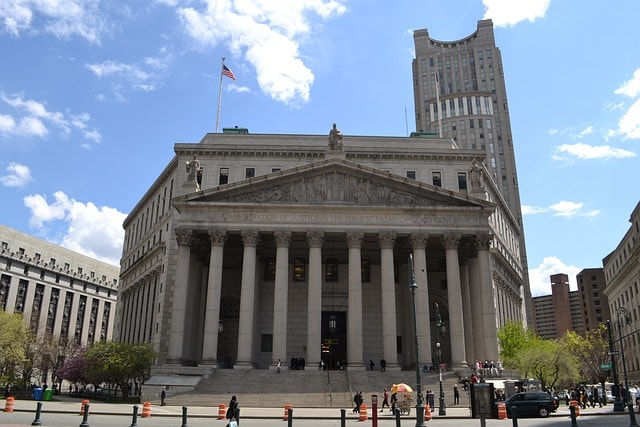- Attorney Appointment (916) 704-3009
Comprehensive Guide to Protective Orders in California

Introduction: Understanding the Importance of Protective Orders
In California, protective orders serve as a critical legal tool to safeguard individuals from abuse, harassment, or threats. These court-issued mandates are vital in maintaining personal safety and peace of mind for those who feel endangered. Whether you’re seeking protection, have been served with an order, or want to understand this aspect of California law, this comprehensive guide will walk you through the intricacies of protective orders in the Golden State.
Protective orders, or restraining orders, are legal documents issued by a court to prohibit an individual from specific actions, usually involving contact with or proximity to another person. They are designed to address a wide range of situations, from domestic violence to civil harassment, and can be crucial in preventing further harm or escalation of conflicts. Protective orders can intersect with family law and civil and criminal matters.
As we delve into this topic, we’ll explore the various types of protective orders available in California, the process of obtaining them, their enforcement, and the legal implications for all parties involved. This guide aims to provide a thorough understanding of protective orders, empowering you with the knowledge to navigate this complex area of law effectively.
Why Understanding Protective Orders is Crucial

Grasping the nuances of protective orders in California is essential for several reasons:
- Personal Safety: Understanding how to obtain and enforce a protective order can be life-saving for those facing threats or abuse.
- Legal Compliance: Knowing your rights and responsibilities is crucial to avoid legal consequences if you’ve been served with a protective order.
- Societal Impact: Protective orders significantly address and prevent violence and harassment in our communities.
- Legal Professionals: Attorneys and law enforcement officers must have a deep understanding of protective orders. Law enforcement officers are crucial in issuing and enforcing protective orders, especially in emergencies.
- Advocacy: Knowledge of protective orders empowers individuals and organizations to advocate for those needing protection.
- Policy Making: Understanding the current state of protective order laws informs discussions on potential improvements or changes to the legal system.
By thoroughly exploring this topic, we aim to contribute to a safer, more informed society where legal protections are understood and utilized effectively.
1. Types of Protective Orders in California
California law recognizes several types of protective orders, each designed to address specific situations:
- Domestic Violence Restraining Order (DVRO):
- Issued in cases involving abuse or threats of abuse in a domestic relationship.
- Applies to spouses, former spouses, dating partners, cohabitants, and close family members.
- Civil Harassment Restraining Order:
- Used for cases involving harassment, stalking, or threats by someone not in a close relationship with the protected person.
- It can be applied to neighbors, coworkers, or distant relatives.
- Elder or Dependent Adult Abuse Restraining Order:
- It protects individuals aged 65 or older or dependent adults (18-64 who can’t defend themselves).
- Addresses physical or financial abuse, neglect, abandonment, or isolation.
- Workplace Violence Restraining Order:
- Requested by an employer to protect an employee from violence or threats.
- The employer, not the employee, must file it.
- Emergency Protective Order (EPO):
- Issued by law enforcement officers in immediate danger situations.
- Short-term, typically lasting only 5-7 business days.
- It is designed to protect victims from various forms of abuse and harassment.
Understanding these distinctions is crucial for determining which type of order is appropriate for a given situation.
2. The Process of Obtaining a Protective Order

Obtaining a protective order in California typically involves the following steps:
- Determine the appropriate type of protective order based on your situation.
- Obtain and fill out the necessary court forms. These are available at courthouses and online.
- File the forms with the court clerk. There is usually no filing fee for domestic violence cases.
- A judge will review your request within 1-2 business days.
- You’ll receive a temporary restraining order (TRO) valid for 20-25 days if approved.
- A court hearing will be scheduled to decide on a longer-term order.
- Serve the order to the restrained person. This must be done by someone over 18 who is not involved in the case.
- Attend the court hearing, where the judge will decide whether to issue a permanent order.
The process involves obtaining a court order that legally mandates the restrained person to comply with specific terms.
This process can be emotionally challenging, but understanding each step can help navigate it more effectively.
3. Emergency Protective Orders (EPOs)
Emergency Protective Orders are unique in their immediacy and short-term nature:
- Law enforcement officers can issue it 24/7 at the scene of a domestic violence incident. These officers can issue EPOs to provide immediate protection in dangerous situations.
- Designed to provide immediate protection in situations of present danger.
- Last for 5-7 business days, giving time to file for a longer-term restraining order.
- Can order the abuser to leave the home and stay away from the protected person and their children.
EPOs are crucial for providing immediate safety in volatile situations, bridging the gap until a more permanent solution can be pursued through the court system.
4. Temporary Restraining Orders (TROs)
Temporary Restraining Orders serve as an intermediate step in the protective order process:
- Issued by a judge after reviewing a request for a restraining order. A TRO is a court order that provides temporary protection until a full court hearing can be held.
- Typically, it lasts 20-25 days until the court hearing for a permanent order.
- Protect while waiting for the full court hearing.
- It can include orders to move out, stay away, and not contact the protected person.
TROs are critical for maintaining safety between filing for protection and the court hearing.
5. Permanent Restraining Orders
Permanent Restraining Orders provide long-term protection:
- Issued after a court hearing where both parties can present their case. A permanent restraining order is a court order that can last up to 5 years and be renewed.
- It can last up to 5 years and can be renewed.
- It may include more comprehensive provisions than temporary orders.
- It can address issues like child custody, spousal support, and property control in domestic violence cases.
These orders provide extended protection and stability for those facing ongoing threats or harassment.
6. What a Protective Order Can Do
Protective orders in California can include various provisions:
- Order the restrained person to stay a certain distance away from the protected person, their home, workplace, and other frequented locations.
- Prohibit any form of contact, including phone calls, emails, or messages through third parties.
- Require the restrained person to move out of a shared residence.
- Address child custody and visitation arrangements.
- Order the restrained person to surrender firearms.
- Mandate attendance at batterer’s intervention programs or anger management classes.
These protective orders protect victims from further harm and ensure their safety during criminal proceedings. This includes Emergency Protective Orders (EPO) and Criminal Protective Orders (CPO), specifically issued to safeguard victims and witnesses.
Understanding these potential provisions helps craft an order that addresses specific safety needs.
7. Limitations of Protective Orders
While protective orders are powerful legal tools, it’s essential to understand their limitations:
- They cannot guarantee personal safety. Additional safety planning is often necessary.
- Enforcement relies on the restrained person’s compliance and timely police response.
- They do not automatically resolve underlying issues like divorce or child custody.
- Cross-jurisdictional enforcement can sometimes be challenging. Enforcement can be strict when the restrained person crosses state or tribal boundaries, complicating the legal process.
Recognizing these limitations helps develop a comprehensive safety plan beyond obtaining a legal order.
8. Serving a Protective Order
Proper service of a protective order is crucial for its enforceability:
- It must be done by someone over 18 who is not involved in the case.
- Law enforcement, a professional process server, or another uninvolved adult can perform it.
- The restrained person must be personally handed the order and other court papers.
- Proof of service must be filed with the court.
Proper service ensures that the restrained person is legally notified of the order’s terms and consequences.
9. Enforcing a Protective Order
Enforcement of protective orders involves multiple parties:
- The protected person should keep a copy of the order at all times.
- Law enforcement is responsible for enforcing the order. Law enforcement officers are accountable for enforcing protective orders and ensuring compliance.
- Violations should be reported to the police immediately.
- Courts can impose penalties for violations, including fines and jail time.
Understanding enforcement mechanisms helps in utilizing the full protective power of the order.
10. Consequences of Violating a Protective Order
Violating a protective order in California carries serious consequences:
- It is a criminal offense which can be charged as a misdemeanor or felony.
- Penalties can include fines up to $1,000 and imprisonment for up to one year for misdemeanors.
- Felony violations can result in state prison terms.
- Multiple violations can lead to escalating penalties.
- Violation can affect other legal matters, such as child custody decisions.
- Violating a court order, such as a protective order, carries severe legal consequences, including potential impacts on firearm possession under CPC §273.6(a).
These severe consequences are designed to ensure compliance and protect the safety of the protected individual.
Related Terms: Local law enforcement agencies, law enforcement officer, criminal protective order
11. Modifying or Terminating a Protective Order
Circumstances may arise where a protective order needs to be changed or ended:
- Either party can request modification or termination.
- A court hearing is typically required for significant changes.
- The judge will consider the reasons for the request and any changes in circumstances.
- In mutual agreement cases, both parties may need to appear in court.
Understanding this process is essential for adapting to changing situations while maintaining necessary protections.
12. Protective Orders and Child Custody
In cases involving children, protective orders can significantly impact custody arrangements:
- The order can include temporary custody and visitation provisions.
- The safety of the children is a primary consideration in these decisions.
- Long-term custody arrangements may need to be addressed in separate family court proceedings.
- Supervised visitation may be ordered to ensure child safety.
Protective orders can intersect with family law, particularly in child custody and visitation cases.
Navigating the intersection of protective orders and child custody requires careful consideration of both safety and parental rights.
13. Firearms Restrictions and Protective Orders
Firearms restrictions are a critical component of many protective orders in California:
- Most protective orders prohibit the restrained person from owning, possessing, or purchasing firearms.
- The restrained person must surrender any firearms to law enforcement or sell them to a licensed dealer within 24 hours of being served.
- Violation of these restrictions is a criminal offense.
- Federal law may impose additional firearms restrictions.
These restrictions aim to reduce the risk of gun violence in volatile situations.
14. Protective Orders in the Workplace
Workplace Violence Restraining Orders offer unique protections:
- An employer can request protection for an employee.
- Addresses threats or acts of violence against an employee in the workplace.
- Can protect multiple employees if the threat extends to them.
- It may require coordination between the employer and affected employees.
These orders recognize the employer’s role in maintaining a safe work environment.
15. Protective Orders for Elder and Dependent Adult Abuse
Special considerations apply to protective orders for elder and dependent adult abuse:
- The elder/dependent adult, a conservator, or other authorized individuals can request it.
- Address physical, emotional, and financial abuse.
- It may include orders related to financial control and property.
- Often involve coordination with adult protective services.
These orders are tailored to the unique vulnerabilities of elders and dependent adults.
16. Civil Harassment Restraining Orders
Civil Harassment Restraining Orders address a broad range of situations:
- Used for harassment, stalking, or threats by someone not in a close relationship with the protected person.
- It can apply to neighbors, coworkers, or distant relatives.
- Requires precise and convincing evidence of harassment.
- It may have different duration and renewal processes compared to DVROs.
These orders fill an essential gap, protecting in situations that don’t fall under domestic violence or workplace categories.
17. The Role of Law Enforcement in Protective Orders
Law enforcement plays a crucial role in the protective order process:
- Can issue Emergency Protective Orders.
- Responsible for enforcing all types of protective orders.
- May assist in the service of orders.
- Investigate and respond to reported violations.
- Provides information and resources to individuals seeking protection.
Law enforcement officers are crucial in issuing, serving, and enforcing protective orders. Understanding law enforcement’s role helps in effectively utilizing their services for protection.
18. Protective Orders and Immigration Status
Immigration status intersects with protective orders in essential ways:
- Immigration status does not affect the right to obtain a protective order.
- Specific forms of abuse against non-citizens may qualify them for special immigration protections.
- Violating a protective order can have serious immigration consequences for the restrained person.
Non-citizens must understand their rights and the potential implications of protective orders on their status.
19. Protective Orders Across State Lines
These Protective orders can extend beyond California’s borders:
- Full faith and credit provisions require states to enforce valid protective orders from other states.
- Protected individuals should register out-of-state orders when moving to California.
- California orders are enforceable in other states, though registration may be required.
Protective orders must be enforced across state or tribal boundaries to ensure continuous protection. Understanding these interstate provisions is crucial for maintaining protection when crossing state lines.
20. Technology and Protective Orders
The digital age brings new considerations for protective orders:
- Orders can include provisions about electronic communication and social media contact.
- GPS monitoring may be used in high-risk cases.
- Evidence of digital harassment or stalking can be crucial in obtaining orders.
- Protected individuals should be aware of digital safety practices.
As technology evolves, so too must the approach to implementing and enforcing protective orders.
21. The Emotional Impact of Seeking a Protective Order
Seeking a protective order can be an emotionally challenging process:
- It often involves confronting traumatic experiences.
- The legal process can be intimidating and stressful.
- There may be fear of retaliation or escalation.
- Support services, including counseling, are often available through the courts or community organizations.
Recognizing and addressing the emotional aspects is crucial for those navigating the protective order process.
22. Protective Orders and Family Dynamics
Protective orders can significantly impact family relationships:
- They may lead to separation of family members.
- Extended family may be affected, especially in cases involving child custody.
- Family counseling or therapy may be recommended or ordered.
- Long-term family dynamics may need to be renegotiated.
Understanding these impacts helps prepare for the broader consequences of obtaining a protective order.
23. False Allegations and Protective Orders
The issue of false allegations in protective order cases is complex:
- Making false statements to obtain a protective order is illegal.
- Courts aim to balance protecting victims with preventing misuse of the system.
- Consequences for false allegations can include criminal charges and civil liability.
- Thorough documentation and evidence are crucial in all cases.
This sensitive issue underscores the importance of truthfulness and proper use of the protective order system.
24. Resources for Protective Order Assistance
Numerous resources are available for those seeking or responding to protective orders:
- Court self-help centers guide forms and procedures.
- Domestic violence organizations offer support and advocacy.
- Legal aid societies may provide free or low-cost legal assistance.
- Online resources from California courts offer information and forms.
Utilizing these resources can significantly aid in navigating the protective order process effectively.
25. Future Trends in Protective Order Laws
Protective order laws continue to evolve:
- Increasing integration of technology in enforcement and monitoring.
- Expanding definitions of abuse to include newer forms of harassment.
- Growing focus on trauma-informed approaches in the legal system.
- Potential for more specialized types of protective orders.
Staying informed about these trends helps understand and utilize the most current protections available.
FAQ: Common Questions About Protective Orders in California
- Q: How long does it take to get a protective order? A: Emergency Protective Orders can be issued immediately by law enforcement. Temporary Restraining Orders are usually issued within 1-2 business days of filing. Permanent orders are issued after a hearing, typically within 3-4 weeks of filing.
- Q: Can I get a protective order if I’m not a U.S. citizen? A: Your immigration status does not affect your right to obtain a protective order in California.
- Q: What should I do if the restrained person violates the order? A: Call the police immediately. Record the violation and report it to the court.
- Q: Can a protective order be renewed? A: Yes, most protective orders can be renewed. You must request renewal before the current order expires.
- Q: Will a protective order show up on a background check? A: Generally, protective orders are public records and may appear on certain background checks.
- Q: Can I own a gun if subject to a protective order? A: No, most protective orders prohibit the restrained person from owning, possessing, or purchasing firearms.
- Q: What if I need to modify the protective order terms? A: You can file a request with the court to modify the order. A hearing may be required.
- Q: Can I get a protective order against someone I’m dating but not living with? A: Domestic Violence Restraining Orders can apply to dating relationships, even if you don’t live together.
- Q: What if the person I need protection from lives in another state? A: You can still obtain a protective order. California orders are













